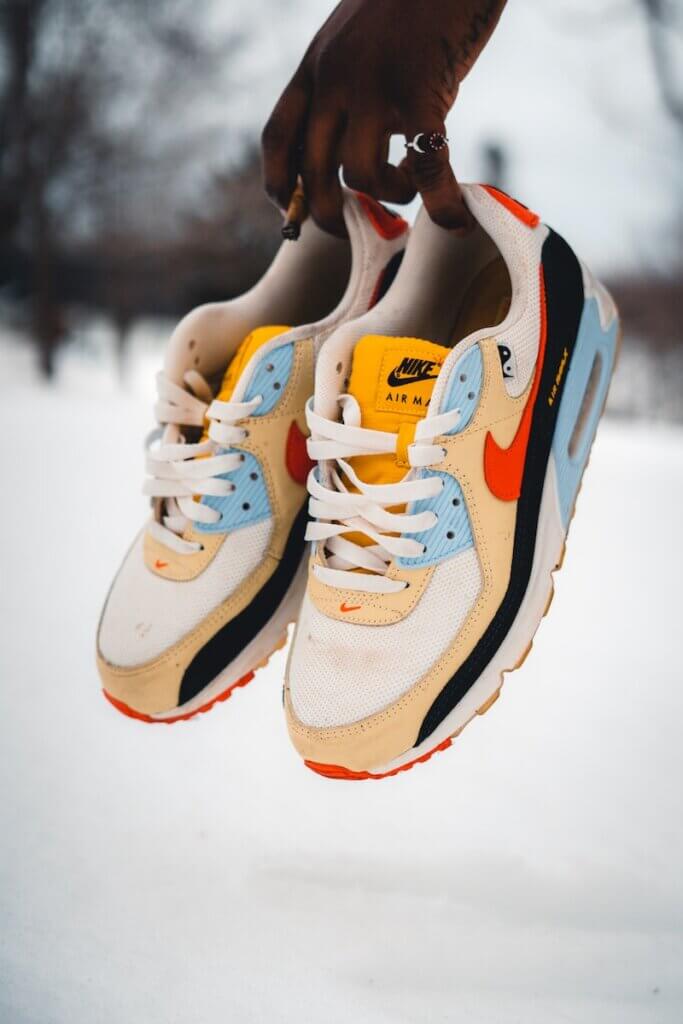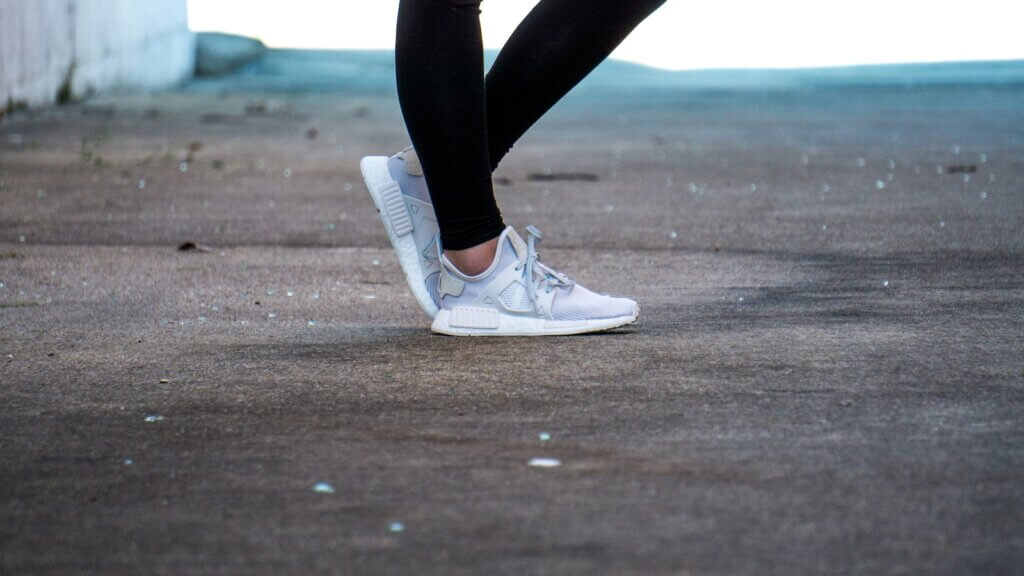Picture this: you’re lacing up your favorite pair of tennis shoes, ready to hit the pavement for a run. But wait a minute, aren’t these shoes designed for tennis? Could they actually be suitable for running too? It’s a common question that often sparks curiosity. In this blog post, we’re diving into the fascinating world of running with tennis shoes.
Yes, you heard it right! We’ll explore the differences between running shoes and tennis shoes, discuss who can benefit from running in tennis shoes, and even reveal why these seemingly unconventional kicks might just be the perfect fit for your running adventures.
Get ready to discover a whole new level of comfort and performance on your runs!
Table of Contents
Difference between running shoes and tennis shoes

When it comes to running, choosing the right shoes can make a big difference in your performance and comfort. You might be wondering, what’s the difference between running shoes and tennis shoes? Let’s dive in and find out!
1. Design and Structure
🏃 Running Shoes:
Running shoes are specifically designed for the repetitive motion of running. They are built with a lightweight and breathable upper, cushioned midsole, and flexible outsole.
The cushioning in running shoes helps absorb the impact of each step, reducing stress on your joints. They also have a heel-to-toe drop, which means the heel is slightly higher than the toe to promote forward momentum.
🥎 Tennis Shoes:
On the other hand, tennis shoes are designed to support lateral movements and quick changes of direction required in tennis. They have a sturdy upper to provide stability during side-to-side movements. The outsole of tennis shoes is made of a durable material that can withstand the abrasive court surface, while also providing traction.
2. Outsole Patterns
🏃 Running Shoes:
Running shoes usually have a consistent, uniform pattern on the outsole to provide reliable traction on various running surfaces such as roads, tracks, and trails. This helps ensure a smooth and steady stride.
🥎 Tennis Shoes:
In contrast, tennis shoes have a different outsole pattern. They feature a herringbone or multidirectional tread pattern that offers excellent grip on the tennis court’s hard surface. This pattern allows players to quickly change direction without slipping, preventing injuries and maximizing performance.
3. Lateral Support
🏃 Running Shoes:
Since running primarily involves forward movement, running shoes focus more on cushioning and shock absorption rather than providing extensive lateral support. They prioritize flexibility and a natural range of motion for a smooth heel-to-toe transition.
🥎 Tennis Shoes:
Tennis shoes, however, prioritize lateral support due to the side-to-side movements involved in tennis. They have reinforced materials and additional support around the midfoot and ankle to help stabilize your feet during quick lateral movements. This helps prevent ankle sprains and provides the necessary support for dynamic gameplay.
Summary
To put it simply, running shoes are optimized for forward motion, cushioning, and comfort, while tennis shoes are designed for lateral movements, stability, and traction on the tennis court. So, if you’re primarily a runner, it’s best to stick with running shoes that are specifically tailored to your needs. Likewise, if you’re an avid tennis player, investing in a good pair of tennis shoes will provide the necessary support and traction for your game.
Can I use my tennis shoes for running?

Absolutely! While tennis shoes may not be specifically designed for running, they can still be suitable for casual runners or those starting out with shorter distances.
Here’s the deal: Tennis shoes are designed to provide lateral stability for quick movements on the tennis court, which is great for side-to-side motions. However, they may lack certain features that running shoes offer for optimal performance and injury prevention.
Running shoes are built to absorb impact, provide cushioning, and support the forward motion of running. They often have specialized midsole technologies, such as gel or foam, to enhance comfort and reduce the risk of injury.
But don’t worry, if you’re a recreational runner or just getting started, using your tennis shoes for running is perfectly fine. Just keep in mind that they may not offer the same level of cushioning and support as dedicated running shoes.
For example, if you’re planning to jog around the park a few times a week or participate in a charity 5K run, your trusty tennis shoes should do the job. However, if you’re training for a marathon or aiming for longer distances, investing in a pair of proper running shoes is highly recommended.
Related: Are Converse Good For Running?
Who can benefit most from running in tennis shoes?
Many individuals can benefit from running in tennis shoes, especially those who engage in various physical activities or prefer a versatile option. Here’s a breakdown of who can benefit the most:
- Recreational Runners: If you enjoy occasional jogs or runs around the neighborhood, tennis shoes can be a suitable choice. They provide sufficient cushioning and support for light to moderate running sessions.
- Multi-Sport Athletes: Are you involved in multiple sports or activities? Tennis shoes can be a practical option since they offer decent support for running while also accommodating lateral movements required in sports like basketball or volleyball.
- Fitness Enthusiasts: If you engage in diverse workouts that involve running, weightlifting, and agility exercises, tennis shoes can be an excellent all-around choice. Their versatility allows you to transition seamlessly between different exercises.
For example, imagine you’re a fitness enthusiast who enjoys a morning run, followed by some strength training and agility drills. Instead of switching between different pairs of shoes, you can simply stick with your tennis shoes throughout the entire routine.
How does it feel running in tennis shoes?

Running in a tennis shoe can be a different experience compared to running shoes specifically designed for running. Let’s dive into how it feels and what you can expect when you hit the pavement in your trusty tennis shoes.
1. Comfortable Cushioning
When you slip on a pair of tennis shoes for your run, you’ll notice that they often provide good cushioning. The thick midsole and ample padding can offer a comfortable and supportive feel as you pound the pavement.
While the cushioning may not be as advanced as in dedicated running shoes, it can still absorb some impact and reduce the strain on your joints.
2. Versatile Support
Tennis shoes are designed to offer support for quick lateral movements on the tennis court. This support can come in handy when you’re running too, especially if you tend to have a neutral or slightly pronated foot strike.
The stability features in tennis shoes can help keep your feet aligned properly and prevent excessive rolling, reducing the risk of injuries.
3. Heavier Feel
Compared to lightweight running shoes, tennis shoes might feel a bit heavier on your feet. This weight is due to the additional materials used for durability and support on the tennis court.
While it may not affect everyone, some runners might notice the difference during longer runs or speed workouts. However, it’s important to remember that a slightly heavier shoe doesn’t necessarily mean slower times or less efficiency.
4. Traction for Various Surfaces
Tennis shoes are designed to provide excellent traction on the court, which can also translate well to different running surfaces. If you often find yourself running on mixed terrains, such as sidewalks, tracks, or grass, the traction on tennis shoes can be beneficial.
It can give you confidence and help prevent slipping or sliding, especially in wet or slippery conditions.
5. Consider Your Running Style
Just like with any type of running shoe, the experience of running in tennis shoes can vary depending on your running style and preferences. Some runners may find that tennis shoes work well for their shorter runs or recovery days, while others may prefer dedicated running shoes for longer distances or faster-paced workouts.
It’s important to consider your individual needs and listen to your body to determine the best shoe for your running endeavors.
By understanding how it feels to run in tennis shoes, you can make an informed decision about whether they are the right choice for you. Remember, the most important factor is finding a shoe that provides the comfort, support, and performance you need to enjoy your runs and reach your goals.
How many miles should you run in tennis shoes?
On average, you should consider replacing your tennis shoes for running after approximately 300 to 500 miles of use. This mileage range can vary depending on several factors such as your body weight, running style, and the terrain you typically run on.
To put it into perspective, imagine you’re running 3 miles per day, 3 times a week. In this case, your tennis shoes would last you around 4 to 6 months. However, if you’re an avid runner covering longer distances, let’s say 5 miles per day, 5 times a week, you may need to replace your shoes sooner, possibly around 3 to 4 months.
It’s important to keep an eye out for signs of wear and tear, such as worn-out outsoles, loss of cushioning, or discomfort during your runs. If you start experiencing discomfort or notice visible damage to your shoes, it’s a good indicator that it’s time for a replacement.
Remember, running in worn-out shoes can lead to discomfort, and pain, and even increase the risk of injury. So, be sure to monitor the mileage on your tennis shoes and replace them as needed to keep your runs comfortable and injury-free.
Read: How Many Days A Week Should I Run?
Final Thoughts
As we conclude this journey of exploring the realm of running with tennis shoes, it’s important to remember that finding your perfect fit is a highly personal endeavor. While there are differences between running shoes and tennis shoes, the possibility of using tennis shoes for running is real.
Whether you’re a casual jogger or a seasoned marathoner, the benefits of running in tennis shoes can be experienced by anyone. The comfort, stability, and unique features of tennis shoes have the potential to elevate your running performance.
So, lace up those tennis shoes and hit the pavement with confidence, knowing that your perfect fit awaits.
Frequently Asked Questions
Do tennis shoes make you run faster?
Tennis shoes are not specifically designed to make you run faster. While they provide traction and support for quick lateral movements on the tennis court, their design may not optimize running performance. Running shoes, on the other hand, are specifically engineered for running, with features like cushioning and stability. Choosing the right running shoe can improve your speed and overall running experience.
Are tennis shoes the same as running shoes?
No, tennis shoes and running shoes are different. Tennis shoes are designed for the lateral movements, quick stops, and pivoting required in tennis. Running shoes, on the other hand, are engineered to provide cushioning, support, and stability for the repetitive forward motion of running. Running shoes have specific features like shock absorption and flexibility that are tailored to the needs of runners.
Do you really need different shoes for different sports?
Yes, it’s recommended to have different shoes for different sports. Each sport has unique demands on your feet and body. Shoes designed specifically for a particular sport provide the necessary support, cushioning, and traction required for that activity. Wearing the appropriate shoes can help prevent injuries and enhance performance. While some activities may have overlapping shoe requirements, having sport-specific shoes is generally recommended for optimal comfort and safety.


